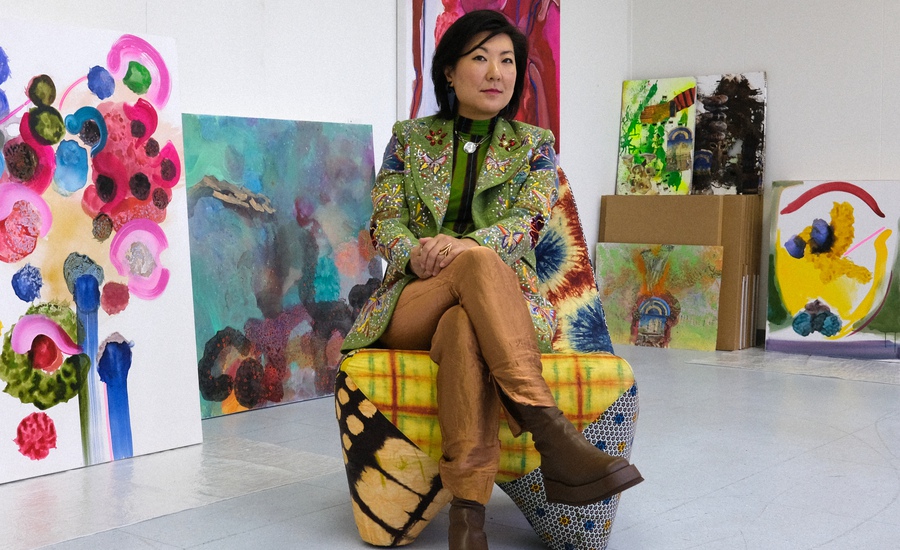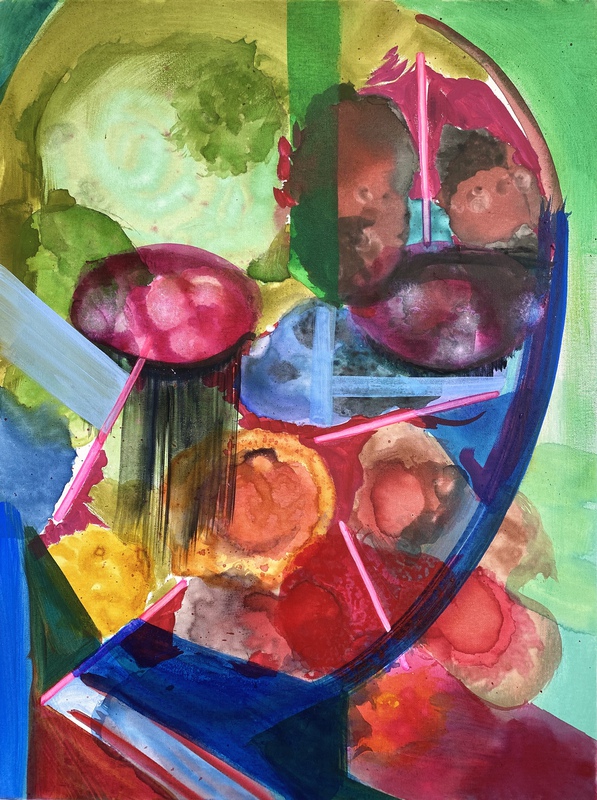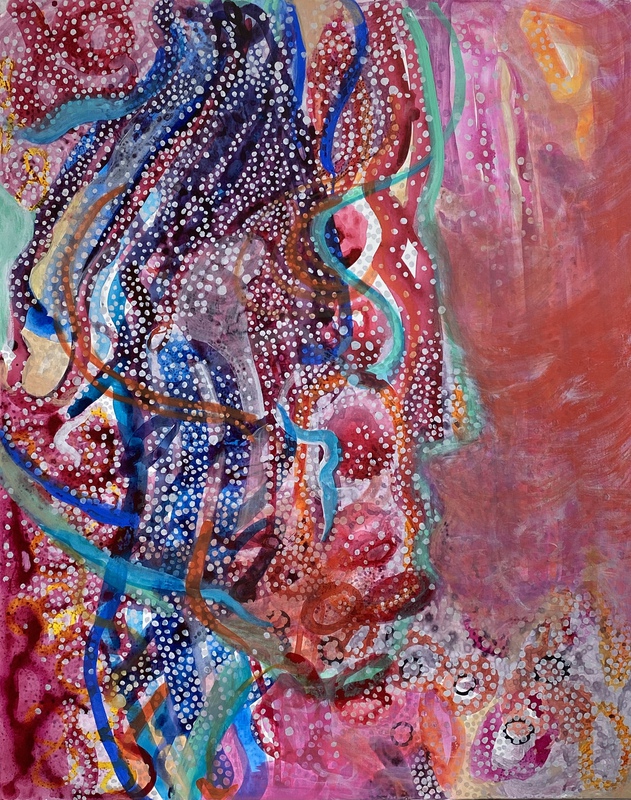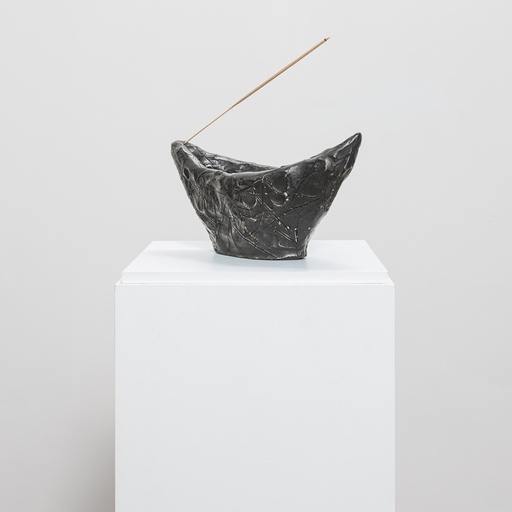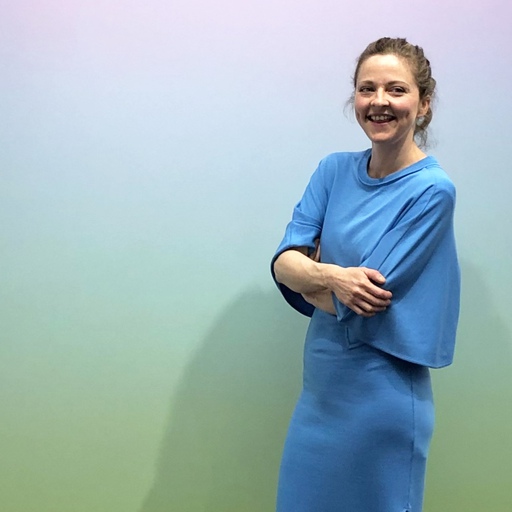How would you describe your work to someone who has never seen it? As lush colorful abstractions, which initially seem to be solely painterly and expressive gestural marks, but are, upon closer inspection, fine lines and tiny circles which create luminous and voluminous forms. The expressions of concentrated energy and shapes can be simultaneously interpreted as cellular microcosms and universal macrocosms.
I also integrate neon elements, sometimes as abstractions, sometimes as descriptive lines that complete an elusive figurative portrait. These surprising, luminescent, neon elements add another dimension and mystery, speaking to the conflict of human-cyborgian contemporary life and light of the digital dimension.
There are references to the ratio of the gold spiral, divine proportions which can be found in nature, and cross sections of DNA to speak to a certain universality within the paintings as patterns, colors and luminescent neon lines.
These create archetypical forms that can be read as a recorded conversation between the artist and canvas about experimentations in deep consciousness and the resonant patterns in existence.
What made you want to become an artist? My earliest creations were portraits of female faces as a child. It was my way of trying to understand and manifest a reflection of myself which was not visible in the world around me. Being almost the only one with an Asian appearance in a black and white community made it a struggle for me to try to accept and depict the eyes. I always made them ’western’ looking, as that was mostly what I saw around me. To make eyes which looked like mine, without feeling shame, was the first impulse that drove me to draw.
The exact moment when I knew I must become an artist, was when I was completely gripped and entranced by an artwork in the Denver Art Museum. I couldn’t believe art could be so beautiful. Then I realized with much mortification and humiliation, that it was not a 'real artwork' but a window which was covered and emanating a glowing light. Today I know, it wasn’t just any window, it was Gio Ponti! The building was the artwork.











